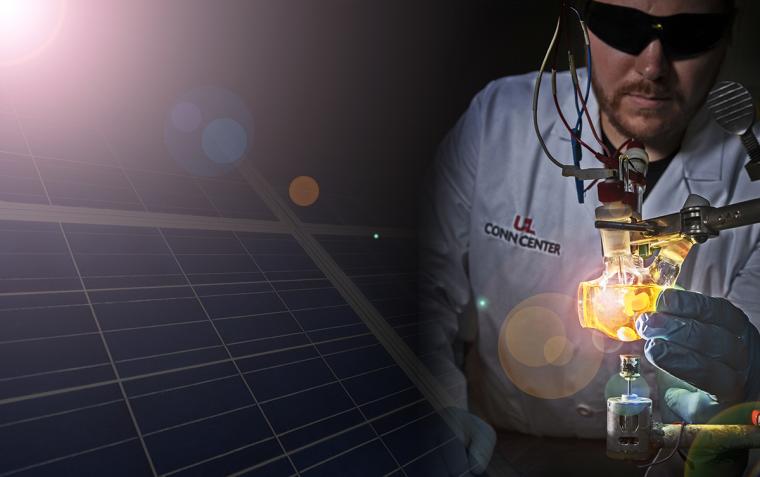

According to the BP Statistical Review of World Energy 2019, “In 2018, global energy demand and carbon emissions from energy use grew at their fastest rate since 2010/11, moving even further away from the accelerated transition envisioned by the Paris climate goals.”
According to this report, much of the increased energy usage underlying the recent spike in carbon emissions can be traced back to weather-related effects, as individuals, families and businesses increased their demand for heating and air conditioning in response to an unusually large number of hot and cold days.
In other words, we appear to be living in a vicious cycle, and if future years are like last year, we’re speeding up. That’s the bad news. The good news is if our next moves are the right ones, we can build a bridge to the future, giving us time to break out of this pattern.

There are signs of progress, however. Power from renewable sources grew 14.5 percent last year, almost as much as the record-breaking increase noted in this category in 2017. Technological advances in geothermal energy, biofuels, solar power and other renewables (as well as carbon capture, use and storage systems focused on natural gas and other traditional fuels) are coming out of the innovation pipeline at a rapid, sustained pace. These improvements are simultaneously driving down the costs associated with manufacturing, distributing and implementing this technology, while at the same time driving up the amount of power they can produce and store.
Equally important, and over decades of effort, individuals, organizations and institutions promoting the move toward decreased reliance on fossil fuels have learned that, in order to shift to more efficient, lower-carbon energy sources, the solutions must be tied to economic realities. The powers that be have simply invested too much in the existing global power-generation infrastructure to throw it all away.

This, in essence, is the core mission of the Conn Center for Renewable Energy Research at the University of Louisville in Kentucky. Established at the University’s J.B. Speed School of Engineering with the support of alumni benefactors Hank and Rebecca Conn, the Conn Center conducts research and development on potentially commercial renewable energy and energy-efficient technologies. The Conn Center’s group of approximately 60 top-notch scientists and engineers direct specific research programs, collaborate with other faculty researchers and work with industry partners worldwide. In several ways, the Conn Center team is helping formulate and drive the global dialogue.
“We used to think we had time to address climate change,” says Hank Conn. “The fact is, we don’t—not much of it, anyway. What we have are resources and some of the best scientific and engineering minds in the world. If we put scientists in the same room with industry leaders and turn them loose, we can create and monetize technologies that will have a tremendous, positive effect on reducing carbon emissions and halting climate change.”

Renewable and Cleaner Energy Technologies That Combine Promise and Profit
The Conn Center has identified three renewable and cleaner energy sources that, as a result of recent scientific and technical leaps forward, stand out as efficient, scalable and commercially viable solutions: solar, biofuels and decarbonized natural gas. In addition to sponsoring a wide range of research activities in these areas, the Conn Center is also working closely with industry and the investment communities to bring these technologies, among others, to market.
Mahendra Sunkara, Ph.D., director of the Conn Center, notes that although much of the current renewables technology was developed in the U.S., China has taken over the lead in production of the components of renewable energy systems. “The United States remains one of the largest producers of carbon emissions,” he adds. “To foster greater adoption of renewables technology and to have a positive impact on the global climate, it is important for manufacturing as well as R&D activity to come back to this country. As U.S. companies become more competitive and reap the rewards of renewables and new technology, they will be motivated to increase their investment in the development and rollout of these important products.”

The Conn Center is at the forefront in the development of thin films created from abundant natural materials that can be deposited via traditional, scalable manufacturing processes to make flexible, durable and lightweight form factors such as building-integrated photovoltaics (BIPVs). Traditional newspaper presses (an increasing number of which are changing use as more readers get their news electronically) could be refitted to print affordable, efficient solar panels worldwide. These panels can be structured, bent and manipulated in ways that allow for more pleasing architectural elements, which can be integrated seamlessly into all types of buildings.
Biofuels—Biomass likewise offers significant promise as a source of energy and other key resources. Just as the list of products created from every part of the corn plant has grown exponentially—from food to cosmetics, toothpaste and fuel—biomass can be converted to solid or liquid fuel as well as a number of other products without displacing food supplies.

Currently, the Conn Center is working on several innovative separation technologies and co-product strategies that are key to commercializing production of biofuels and biochemicals. Among other research programs, the Conn Center is focusing on maximizing the extraction of 5 chain carbon (C5) sugars from low-lignin biomass, such as grain hulls, through low-energy consuming technologies; extending C5-isolation technology to C6 isolation and C6-based second- and third-generation biofuels; developing useful products from residual fibers; and creating hydrophobic and durable coal-replacement renewable solid fuels.
Decarbonized Natural Gas—Over the past 30 years, natural gas has been one of the fastest growing sources of energy. Burning somewhat more cleanly than other fossil fuels, it has helped the U.S., in particular, reduce overall CO2 emissions to their lowest levels since 1985.

Despite these advantages, natural gas remains a primary contributor to atmospheric carbon levels. Decarbonization is essential for maintaining this important source of energy with minimal impact on climate change. By commercially decarbonizing natural gas, this opens the door to compounded results.
First, although both are carbon-based products, we would reduce dependence on oil-based products by replacing them with cleaner natural gas. Further, by taking the carbon out of the cleaner choice of these two options, ultimately this breakthrough alone, over time, has the potential to affect global CO2 emissions (from carbon-based fuels) by an order of magnitude in the range of 10 to 20 percent. The Conn Center is working closely with partners to develop the technologies that can accomplish this task.
Second, as with the production of biofuels, the process of decarbonizing natural gas can result in a number of commercially viable by-products, including hydrogen, carbon microtubes and other innovative carbon structures. These resources can be used to manufacture a broad range of products, including plastics, solvents, paints, packaging and other items. Hydrogen, in particular, can also be used in power-storage devices—which, as we will explore next, is the most important factor in determining adoption of renewable energies.

Power providers must be able to provide a steady, reliable stream of electricity to their customers—individual homes and entire industries alike depend upon it. Traditional technologies such as coal-fired, nuclear and hydro power plants have adapted to these requirements and can vary production levels to meet increased demand. When cold or hot weather, for example, increases the need for heating or cooling, power companies can increase production or tap into the electrical grid to obtain power from neighboring providers that are not experiencing such high levels of demand.
To some degree, providers of power derived from solar, biofuel and decarbonized natural gas can anticipate and adjust their capacity as needed. However, unexpected events and stressors can create lag times between the need for and the delivery of electricity. When the use of micro grids—groups of interconnected loads and distributed energy resources within clearly defined boundaries—becomes more common, particularly in rural, less-developed and low-population areas, alternatives will need to be further developed to address such spikes.

The Conn Center is helping lead the charge in the development of effective energy storage solutions. Lithium ion and other lithium-based battery technologies have been widely adopted in part because of the relative availability and low cost of its primary components, including lithium and cobalt. However, these resources are somewhat toxic and are generally located in countries that are politically unstable. With this in mind, the Conn Center is working on two primary tracks: furthering the development of low-cost, high-energy-density Li-ion, Li-S and Li-air batteries, while also sponsoring research into the next generation of “beyond-Li” storage devices, including magnesium-ion, zinc-air and aqueous-sodium batteries, all of which hold promise for greatly reducing production and storage costs while improving efficiencies, scalability and durability.
What’s Required to Minimize Climate Change? Will, Resources and Science

“As we better understand the causes of climate change and discuss potential responses,” says Hank Conn, “it’s important to remember we can make a difference. With the right combination of will, resources and scientific study, solutions that meet the demands of energy consumers and providers are well within our reach.”
The question we have to ask ourselves is, “Are we facing an environmental Armageddon?” My answer is no, we’re not. What we are facing is a bridge to the future—one where the energy needs of our world can be solved via positive environmental impact. If we can implement cost-effective alternatives on a faster trajectory than our growing needs, we’ll turn the tide back in favor of Mother Nature. It’s within our power, and especially the team at Conn Center and their network partners, to practically develop these solutions. T&ID
The Phoenix House:
Award-Winning Home for the Conn Center for Renewable Energy Research

During the design phase, the team focused on a low-cost, solar-powered habitat for disaster relief. They developed an easily deployed structure that features a grid-compatible power system for net metering that can be linked with other homes to form local microgrids. This housing system, which is designed to be comparable in cost to conventional manufactured housing and utilities, can also be used in rural areas with greater efficiency and long-term equity.
The “Phoenix House” was showcased in fall 2013 at the Solar Decathlon competition site at Orange County Great Park in Irvine, Calif. It won first place in the “Affordability” segment of the competition as well as “Team Favorite.”
After the competition, the University of Louisville utilized the Phoenix House on campus as the administrative offices for the Conn Center for Renewable Energy Research, which includes an outdoor laboratory and sculpture garden built by assistant director Andrew Marsh. The house continues to be utilized for further technology studies and testing of residential scale prototypes as well as student outreach.

